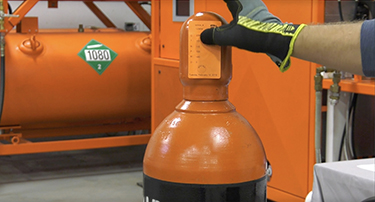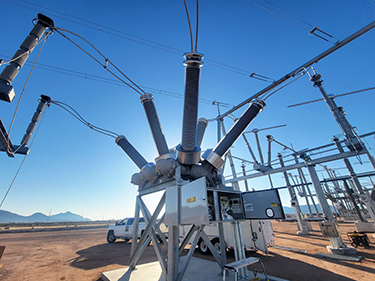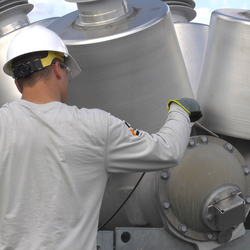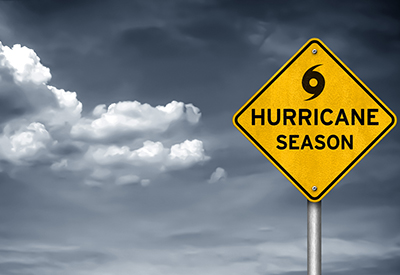When a hurricane passes over any community, the utilities are among the biggest concerns. Both ensuring that utilities remain available for the residents and preventing disasters related to electricity, water, or gas is essential to hurricane season preparations and emergency response before the first big storm hits. FEMA reports that proper preparation and timely decisions can significantly reduce recovery time and cost.
It should come as no surprise that utility crews have special protocols when a hurricane is on the way, including SF6 gas management. Every community must know how to prepare utility crews for hurricane season.
How do utility crews prepare for hurricane season? Let us shed a little light on the detailed process of utility preparation for any major storm.

Step 1: Inspect and Maintain All Tools and Equipment
First, utility crews ensure that all their tools and equipment - including vehicles - are in good working condition. The last time we want to discover a tool is not working is during an emergency hurricane service.
A checklist is created to guide detailed inspection of all tools and equipment. Nothing is left out. Equipment is cleaned, tuned, and tested to confirm it will be ready in an emergency.
Common issues like damaged parts, rust, spent batteries, or misaligned elements are taken care of during this stage or broken tools are replaced with working models so each utility team is fully equipped.
Step 2: Create a Comprehensive Emergency Response Plan
Utility teams then use historical data and foresight to build a hurricane preparation and emergency response plan during pre-storm preparation. This planning aligns with the measures advised by FEMA Hurricane Preparedness and the National Oceanic and Atmospheric Administration National Hurricane Preparedness guidelines.
Comprehensive emergency response plans ensure that everyone knows exactly what to do as soon as the storm hits a critical warning level or when utility infrastructure is damaged during the storm.
An effective emergency response plan:
- Clearly defines teams and duties
- Provides training so everyone can do their jobs quickly and in coordination
- Secures primary and backup channels of communication
- Defines what to do if specific emergencies occur
- Provide means to maintain communication with agencies
- Establishes safety procedures for storm conditions
- Provides resources for emergency teams to weather the storm
Step 3: Conduct Regular Training and Drills
Training and drills help everyone act quickly without having to check the manual or ask for guidance. This is incredibly important in a storm scenario, where teams that can perform safety tasks quickly can stay safe and save lives.
- The National Hurricane Center emphasizes the importance of emergency plans and training for effective disaster response
Utility service routines are trained, practiced, and drilled so everyone knows how to perform their task as part of the team. Safety protocols for specific emergencies are also conducted in drills so that if that emergency occurs, teams can take immediate and correct action. Utility substation service teams, in particular, are trained to understand the risks associated with SF6 gas leaks and SF6 handling of by-products in storm conditions.
Step 4: Ensure Clear Communication Channels
Communication is paramount when performing utility services before, during, and after a hurricane hits. It is vital to have reliable communication channels during emergencies that work even when normal communication channels go down.
Most utility teams rely on several channels and backup channels. Radio communication, cell phones, and even relay systems can all be used in case any one system becomes unavailable due to damaged signal infrastructure or atmospheric interference.
Teams are also trained with communication protocols including short code phrases when communication signals are unreliable. Utility teams learn how to coordinate their emergency response routines and connect with a central dispatcher to address the most important tasks throughout the emergency.
Step 5: Stock Up on Essential Supplies
Another essential preparation step before the hurricane season is to supply each utility service facility with emergency supplies. Back-up generators can help keep utility infrastructure running even if the local power goes out.
Utility teams on call during a hurricane should also have plenty of survival supplies in their vehicles and headquarters, where they will weather the storm.
Essential supplies include:
- Non-perishable food
- Fresh drinking water
- Flashlight and batteries
- First Aid Kit
- Fire Extinguishers
- Charged USB power bank with appropriate cables
- Whistle
- Blankets and sleeping gear
- Waterproof bags
- Face masks
- Insect repellant
- Backup equipment and/or repair supplies
- Radio and backup batteries

Step 6: Manage Your SF6 Inventory in Advance
Whether your SF6 gas is supplied locally or via an international supplier, gas users can ensure their equipment reliability by being proactive with advanced gas monitoring software, such as Direct Track. Maintaining gas inventory and working with gas suppliers to hold reserve safety stock of SF6 cylinders before the hurricane season is a critical step for emergency preparedness. Ideally, safety stock of cylinders should be maintained and stored at a supplier's location and made available for immediate dispatch in the event of an emergency.
Companies should manage their SF6 cylinder inventory before the hurricane season begins. It is important to locate and centralize all Full, Partial, and Empty cylinders throughout a company's network of warehouses and field locations. Making the time to complete the prepwork of consolidating partially filled cylinders and testing the quality of the gas in each cylinder is a crucial step to saving time in the event of an emergency. In addition, each cylinder should be properly labeled and inspected before storage.
It is essential to prep your cylinder stock early, as it may be impossible to import new cylinders until a hurricane event is complete and roads are cleared in the aftermath.
Coordination with agencies and proactive SF6 cylinder inventory management allows teams and the utility service to be fully informed of their ability to address outages with cylinder supplies.
Step 7: Work With Your Gas Supplier for an Emergency Safety Stock of Gas Cylinders
Whether your organization is a utility or if you are a gas user who relies on SF6 gas to keep your delicate electronics properly insulated, being cut off during a hurricane is bad news. The best way to avoid disaster is to work with your SF6 gas supplier to secure an emergency safety stock of gas cylinders which will be there when you need them most.
Establish a relationship with your gas supplier and communicate any emergencies you can anticipate, such as hurricane season. Arrange for the delivery and maintenance of an emergency safety stock before hurricane season begins to ensure you have a sufficient supply before the first storm has a chance to wreak havoc.
Ensure a timely delivery during emergencies by planning ahead and informing your supplier of foreseeable risks.
Step 8: Ensure Your Gas Handling Equipment Is Well Maintained
Inspect and maintain your SF6 gas handling equipment before you need it, don't wait until that moment to inspect the equipment.
It is important to maintain your gas handling equipment, particularly gas cart trailers with built-in generators. Create a checklist for routine maintenance and inspections. You can learn more about maintaining your SF6 equipment by reading our recent blog post.
Properly maintaining equipment will allow you to catch common issues and address them promptly so that your infrastructure is never at serious risk of being unable to address your SF6 gas needs in an emergency.

Step 9: Have DILO Direct on Speed Dial for Emergent Field Service Support
The good news is that you don't have to plan your emergency preparedness alone. DILO Direct offers responsive emergency field services if your SF6 gas supply or equipment is at risk. DILO Direct can assist during emergencies by sending professional teams able to quickly address your equipment or supply problems.
DILO Direct offers both routine and DILO emergency support services to keep your SF6 gas systems in working order when and how you need them. We offer
- Gas cart maintenance programs
- Gas handling services: recovery, vacuum, and refilling
- Gas quality testing
- Gas mass measurements and nameplate verification
- Leak detection services
- Cylinder consolidation and cylinder maintenance
- Gas supply, reconditioning, and disposal
- Gas by-product clean-up services
- On-site emergency services
The best way to ensure quick access to DILO Direct service in an emergency is to get in touch and cultivate a customer account relationship before hurricane season. Let us know the risks you anticipate, and we can put together an emergency preparation plan with someone ready to help when a hurricane blows your way.
DILO Direct is particularly prepared to provide preparedness for utility crews. We encourage you to take proactive measures to ensure safety and efficiency during hurricane season with our professional support to back up your local teams.
Contact DILO Direct to build your utility hurricane response plan before an emergency has a chance to strike.





